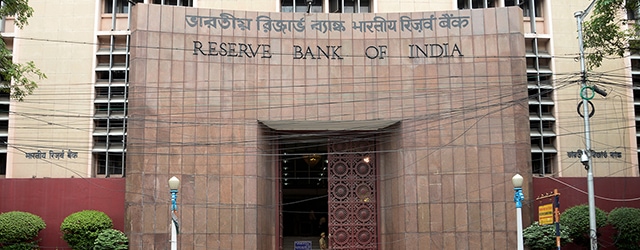An election triumph gives the prime minister another chance to revive India’s sagging economy. A troubled banking system compounds the challenge.

When Narendra Modi came into power in 2014 at the head of a nationalist Bharatiya Janata Party government, it was viewed as a paradigm shift. India had long been ruled by a coalition often mired in scandal and crony capitalism. Modi’s promise of a new India appealed to many.
Yet five years later, after elections that gave Modi an even stronger mandate, the picture is hardly rosy. A rising population of more than 1.3 billion struggles to find employment, and both the agricultural and manufacturing are suffering.
As of the first quarter of calendar 2019, when GDP slipped to 5.8%, India is no longer the world’s fastest growing economy. Growth was the slowest in more than four years and well below market expectations.
“[Low] GDP figures are largely due to both lack of spending by the government and low consumption demand,” says Siddharth Purohit, a Mumbai-based research analyst with SMC Global Securities. “The government had to keep the fiscal deficit below 3.4%, hence a lot of expenditures had to be curtailed or deferred.”
Meanwhile, data from the Ministry of Statistics and Programme Implementation show unemployment reached a 45-year high of 6.1% in the fiscal year 2017-2018, including youth unemployment of 5.3% in rural India and 7.8% in urban India.
Private consumption is not helping. According to a report by ANZ, private consumption slowed to 7.2% in the third quarter of fiscal 2018, down from 8.1% a year earlier. Investment slowed even more sharply, rising only 3.6% in the fourth quarter of fiscal 2018 and contributing only 1.1 percentage points to growth compared to 11.7% in the period a year earlier, when it contributed 3.7 percentage points to growth.
Stuck in this nexus of low growth, little private investment, low consumption and high unemployment, the economy will have to be the first order of business for Modi’s new government.
“Boosting consumption and creating jobs will perhaps need to take precedence over all else,” says Pejavar Murari, a former secretary to the president of India and adviser to the president of the Federation of Indian Chambers of Commerce and Industry (FICCI). “Because no private investment has come in the last 10 years, corporate confidence is down; and savings, which are a measure of investment, are down. You have to ensure the environment is made more private-investment friendly.”
Stressed Banks
The banking sector may require the most urgent focus, although stressed banks reeling under the weight of nonperforming loans (NPLs) have been plaguing India for some time.
“The banking sector’s problems were mounting even when the previous government was in power,” says Salman Soz, an international development consultant with the World Bank and a spokesman for the opposition Indian National Congress party (INC), as well as author of The Great Disappointment, a book critical of Modi’s first government.
The government has taken a few cleanup measures. Smaller banks have been merged with stronger ones, while numerous public sector banks have had to take haircuts in order to survive.
“Banks have recognized troubled assets and have adequately provided [reserves]. Cleanup is largely over,” says Purohit. “What is important is to face the new challenges of growth capital. Except for one or two large banks, capital adequacy is still an issue.”
India’s new Insolvency and Bankruptcy Code (IBC), designed to ensure quick and smooth resolution of insolvencies, has taken up resolution of more than 1,500 struggling companies since implementation began in 2017. Kroll Associates praised the law as having “proved the skeptics wrong” and “very much a positive for the Indian market. Critics also abound, however. “Unfortunately,” says Soz, “despite the promise of the IBC, it is being undermined owing to crony capitalism and lack of accountability in public sector banks.” As of 2019, public sector projects account for nearly 86% of total outstanding NPLs.
India also saw, in late 2018, the collapse of IFIN, the nonbanking finance arm of Infrastructure Leasing & Financial Services (IL&FS), the big infrastructure development and finance company. Once-mighty IL&FS had over 250 subsidiaries that defaulted on payments. A report in the Economic Times estimates IL&FS’s group debt at more than $12 billion.
“The downfall of IL&FS resulted in the drying up of liquidity in the system, and both banks and [nonbanks] became cautious about lending,” says Purohit. “Now the biggest challenge is to provide capital to state-owned banks to nurse credit growth.”
Some good news may be forthcoming. Radhika Rao, senior vice president and economist at DBS Bank Group Research, writes in a June report on India’s monetary policy that with the elections over, “government spending is likely to be revived, as the focus remains on boosting infrastructure and reviving stalled projects.” She adds that “expediting cases under the resolution and bankruptcy system will add latent private sector capacity back to the system.”
However, “the trade outlook will remain challenging considering global demand slowdown and trade disputes,” Rao concludes. The bank revised its 2020 GDP forecast down to 6.8% from 7%.
Over the next five years, Rao expects the government to take a multipronged approach, with emphasis on improving physical infrastructure, lowering taxes and lowering barriers to acquiring land or factories. Such loosening of rules is expected to help domestic as well as global players better understand operational costs, business viability and profitability, and thereby lead to job creation.
But can ambitious goals wait for the government to clean up the banks—especially when that might curtail lending? “The government should keep its banks well capitalized, conditional on improvements in governance and management efficiency,” argues Raghuram Rajan, former governor of the Reserve Bank of India, in a new book, What the Economy Needs Now. “This … prevents the government from building up contingent liabilities on bank balance sheets that a future government will have to pay for.”



